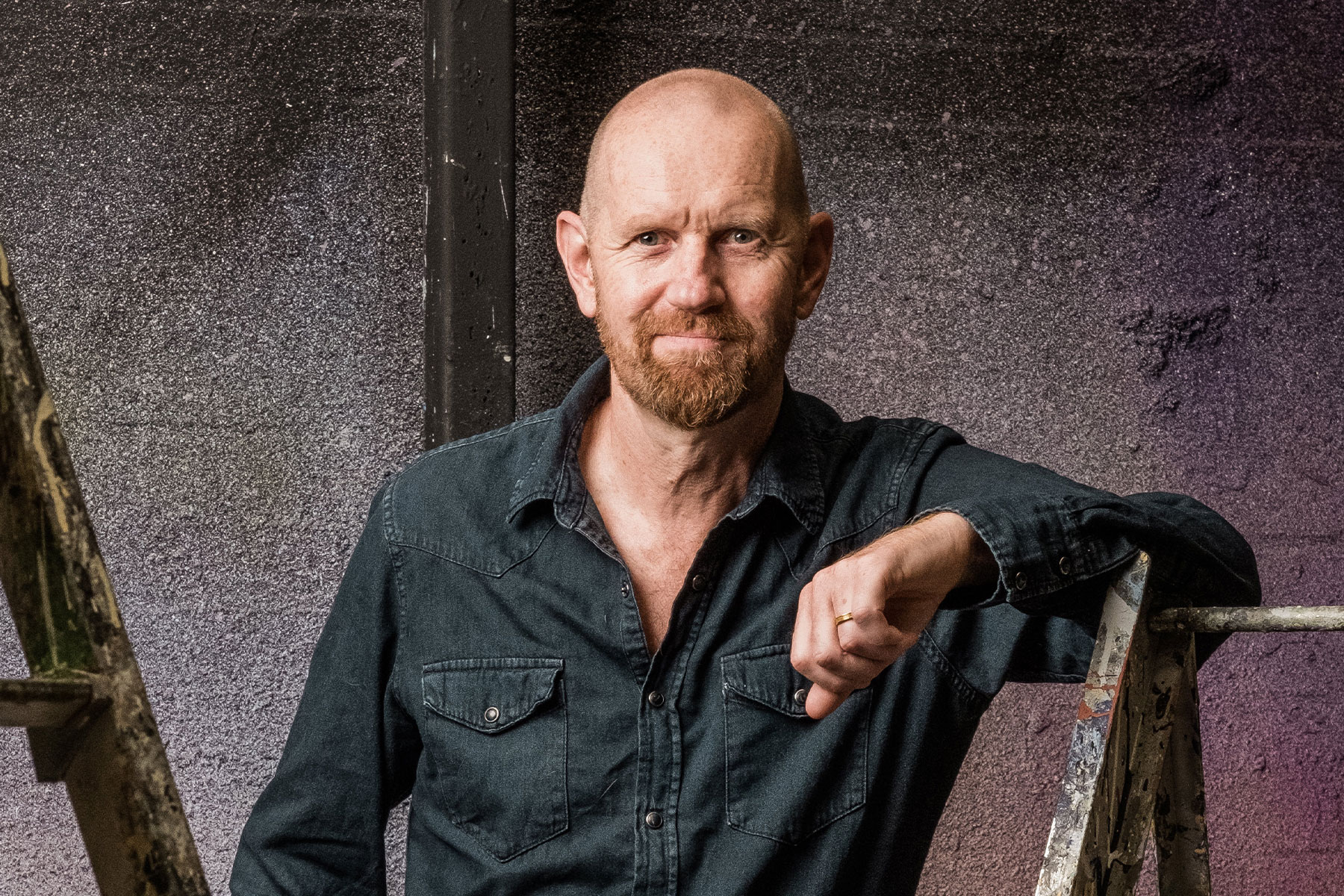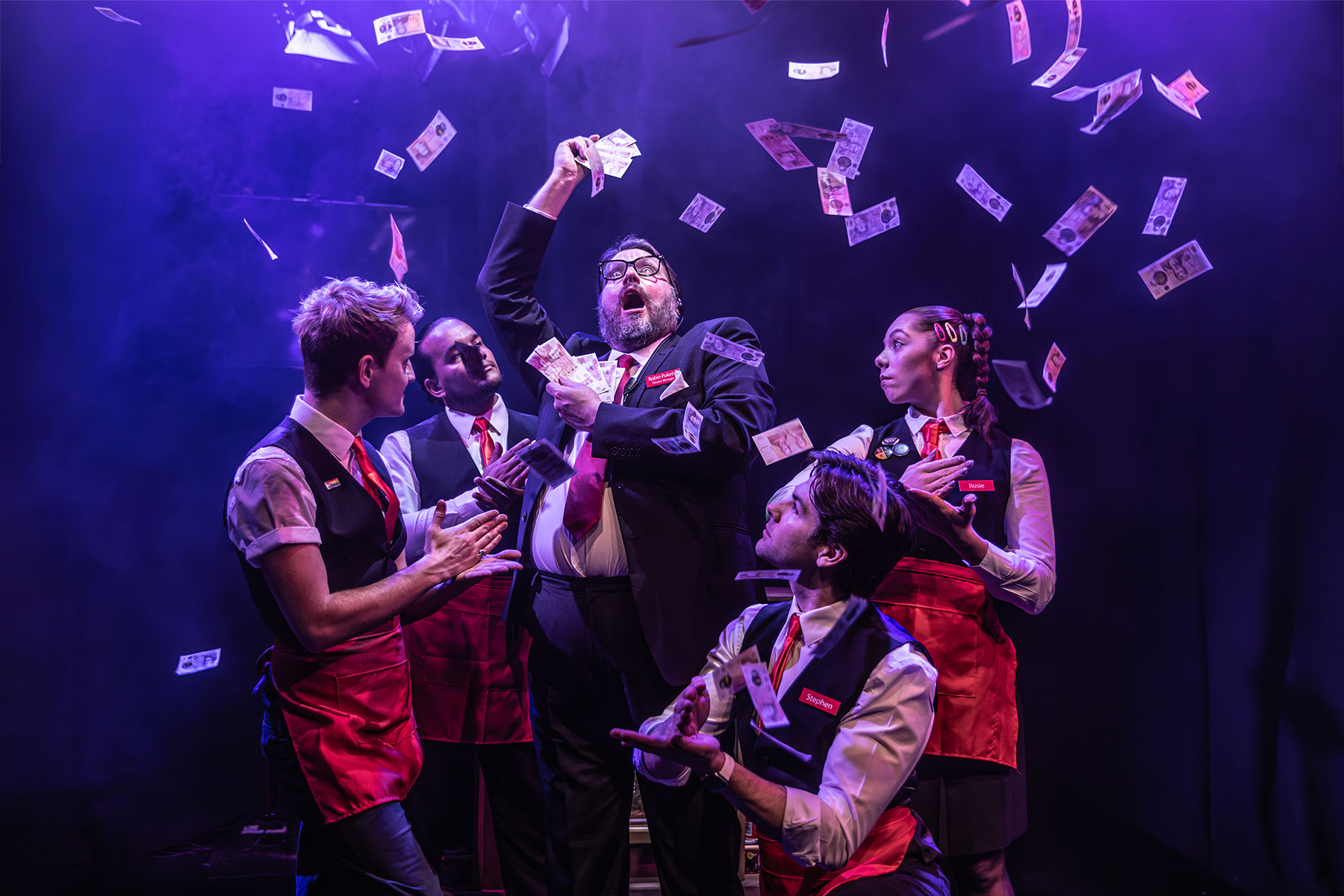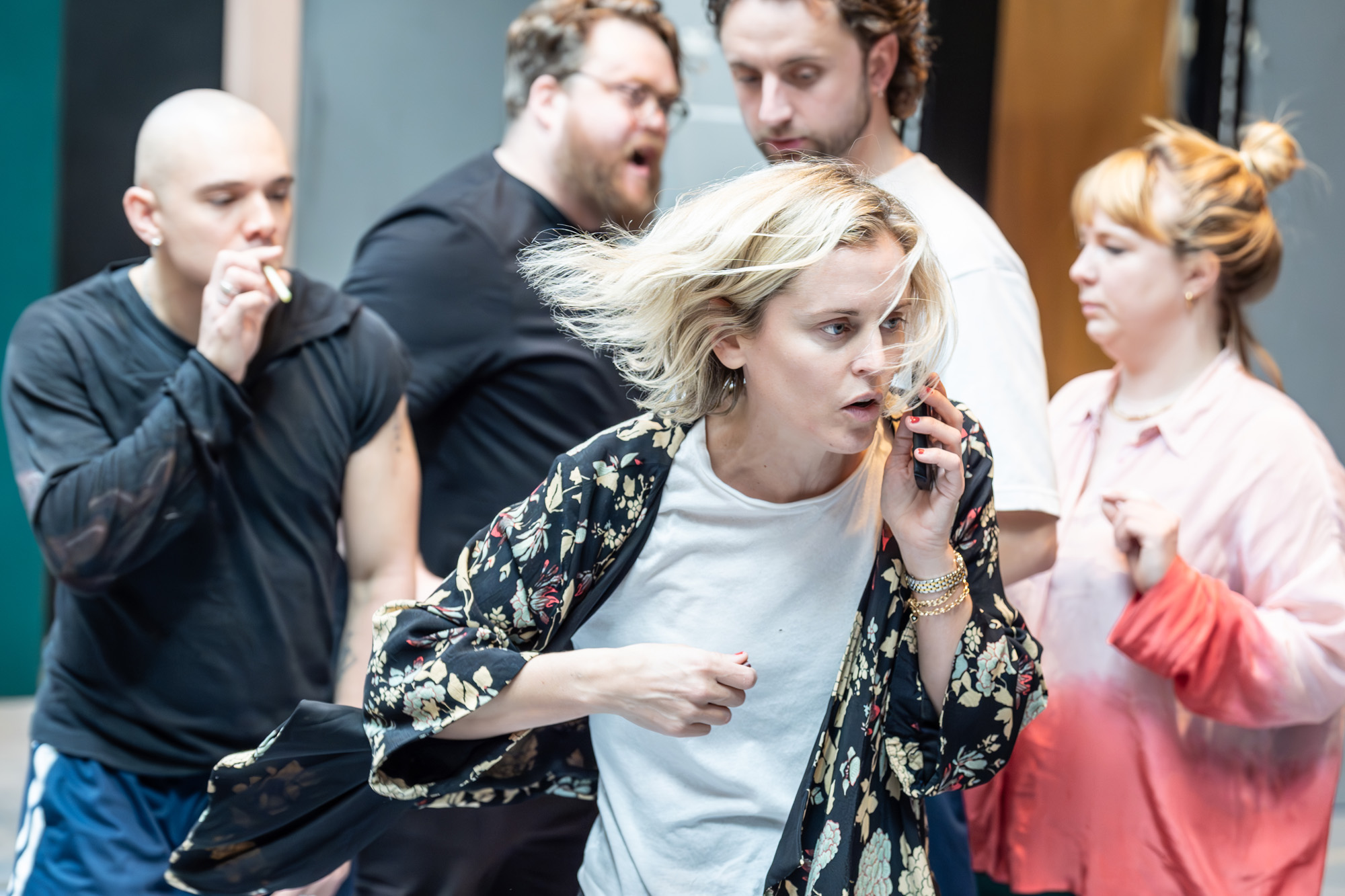Libby Watson on Designing for the Old and the New
You’ve recently been involved with designing two very different shows –Dangerous Corner and Guys and Dolls playing in equally different types of theatre. What has been your immediate response to each production?
I always like the challenge of a new project and each one is unique. Guys and Dolls is a big show with many people on stage, and it’s touring, so there are many practical factors. But, it’s a well known piece and there is an expectation of a certain style and genre and I take this into consideration when starting the design process. Dangerous Corner is presented in a Georgian theatre and this does influence the aesthetic to a certain extent. But with this play that reads so well I felt it didn’t need to be stifled by a heavy box set and lots of furniture.
The first response to a script is always the most useful. It tends to inform the rest of the process. I would say that I have an aesthetic that is recognisable throughout all my wor, although I would always try to be true to the period and genre. I tend to work architecturally first and then add colour and texture when I’ve worked out the mechanics and I would say this is certainly true on both these productions.
What changes do you usually make between your initial designs and those actually carried out, and why?
Changes usually involve simplification and not much more than that. For instance, in Guys and Dolls we cut certain sections of scenery at the final model showing as we wanted the show to be more fluid. Stopping for a scene change was unnecessary and clumsy. For Dangerous Corner we changed the quality of the material used for the walls for budgetary reasons. It made no difference to the look and made the initial design still affordable.
What genre of theatre do you most enjoy designing?
This is hard to answer as they all have their own challenges, and I’ve worked in opera, musicals and drama. But I do like to work outside my comfort zone, and if this means extensive research and having to learn something new whether it be for set or costume, then that usually is an exciting aspect of the job and something that you take away with you at the end.
And for which type of theatre building?
I’ve always enjoyed working for companies where they have their own workshop and wardrobe departments. Particularly the workshop; it means they know their own theatre space so well and this can only be helpful. I recently worked at the New Vic Stoke and Stephen Joseph in Scarborough on a production called Bus Stop, both theatres are in the round. I hadn’t worked in this format before and the workshop were invaluable in their advice and likewise wardrobe and stage management understood the level of detail needed when an audience are so close.
And for which style of production?
I enjoy researching period. But I would say I like to solve problems of staging aesthetically and minimally and to give the audience an experience that is theatrical and allows them to still use their own imagination.
Which has been the show you most enjoyed designing?
I would probably single out Gem of the Ocean at the Tricycle directed by Paulette Randall. The play is set into set in 19th century Pittsburgh in the Hill district. I decided to place the interior of the house on a concave raked curve. It was a risk in terms of actors being able to move fluidly around the set. But, it wasn’t a problem, and a scene set on a slave ship in the middle of the play had much more resonance because of the distinctive floor shape.
And which commission are you most looking forward to in the immediate future?
The next projects I’m working on are Marriage of Figaro at the Watermill, Persuasion at Salisbury and One Monkey Don’t Stop No Show at Sheffield .
How did you train, and where?
I trained at Bristol Old Vic Theatre School mainly in carpentry and lighting design and then, after a year of working for a scenery company, I studied at Wimbledon School of Art in theatre design.










